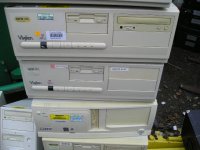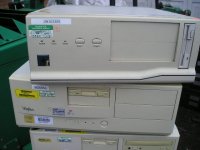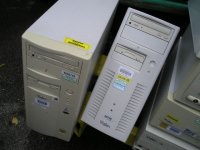This is a query about a pile, several dozen, 90s desktops and towers I have just bought. I need to shift them, and only have a car, so the question is, are all of them worth the effort to keep in order to sell on, or are they just scrap so any damage doesn't matter? The tin cases take up space, what about the PSUs?
Seem to be mostly Viglen or Dell, odd other one as well.
No idea if they work, no hard discs, might even have been relieved of their CPUs etc, the joys of buying at auction!
Seem to be mostly Viglen or Dell, odd other one as well.
No idea if they work, no hard discs, might even have been relieved of their CPUs etc, the joys of buying at auction!




